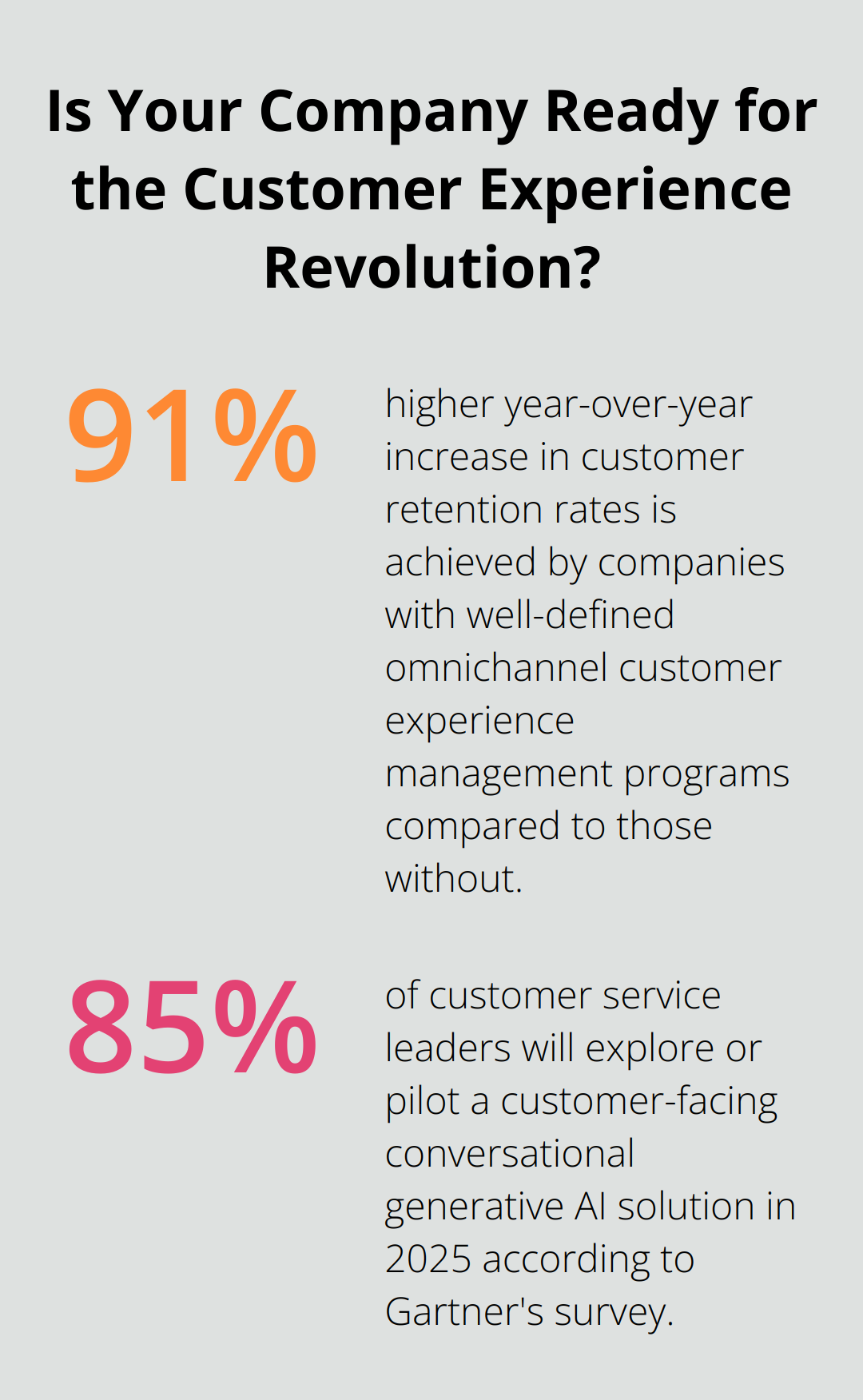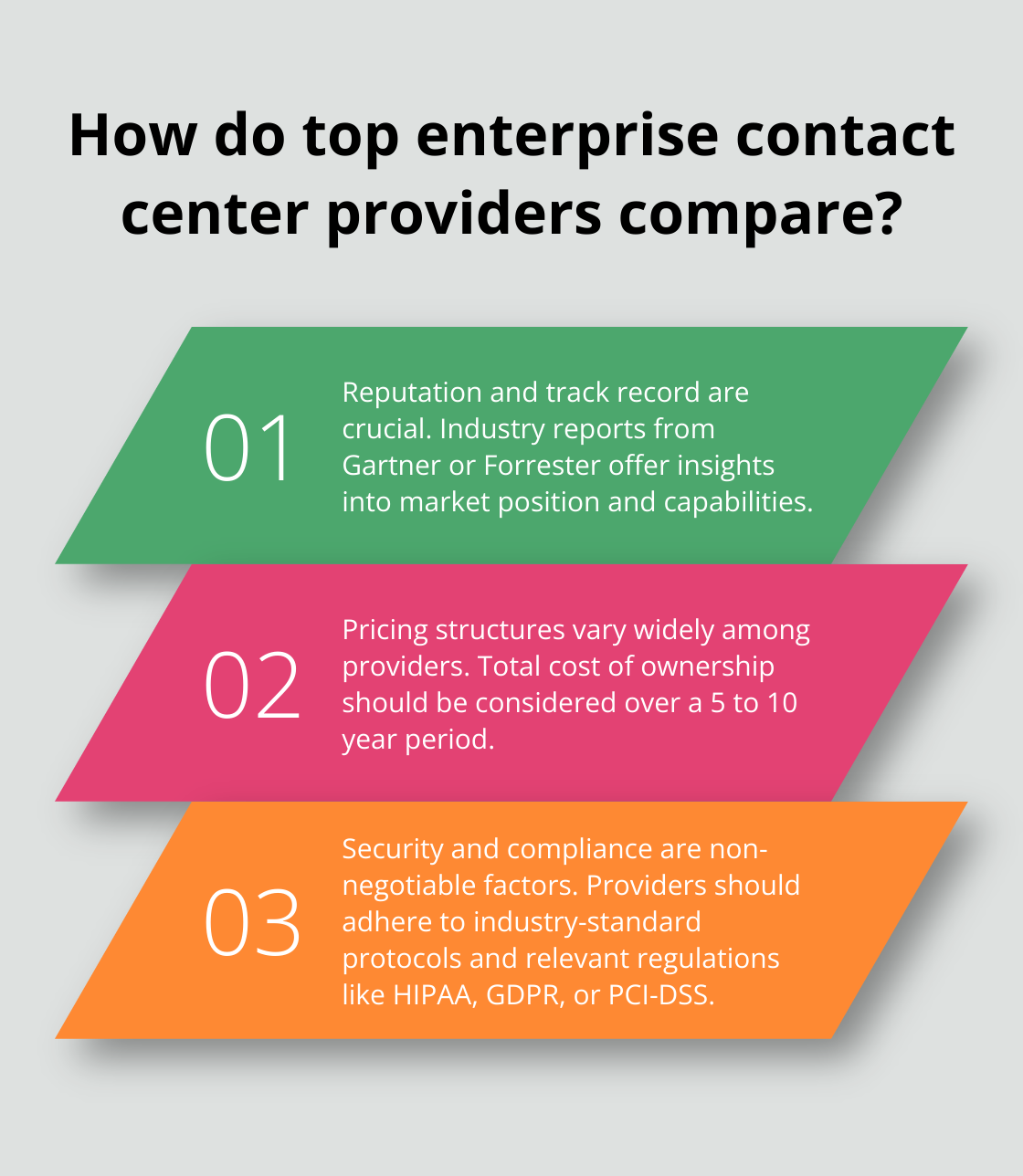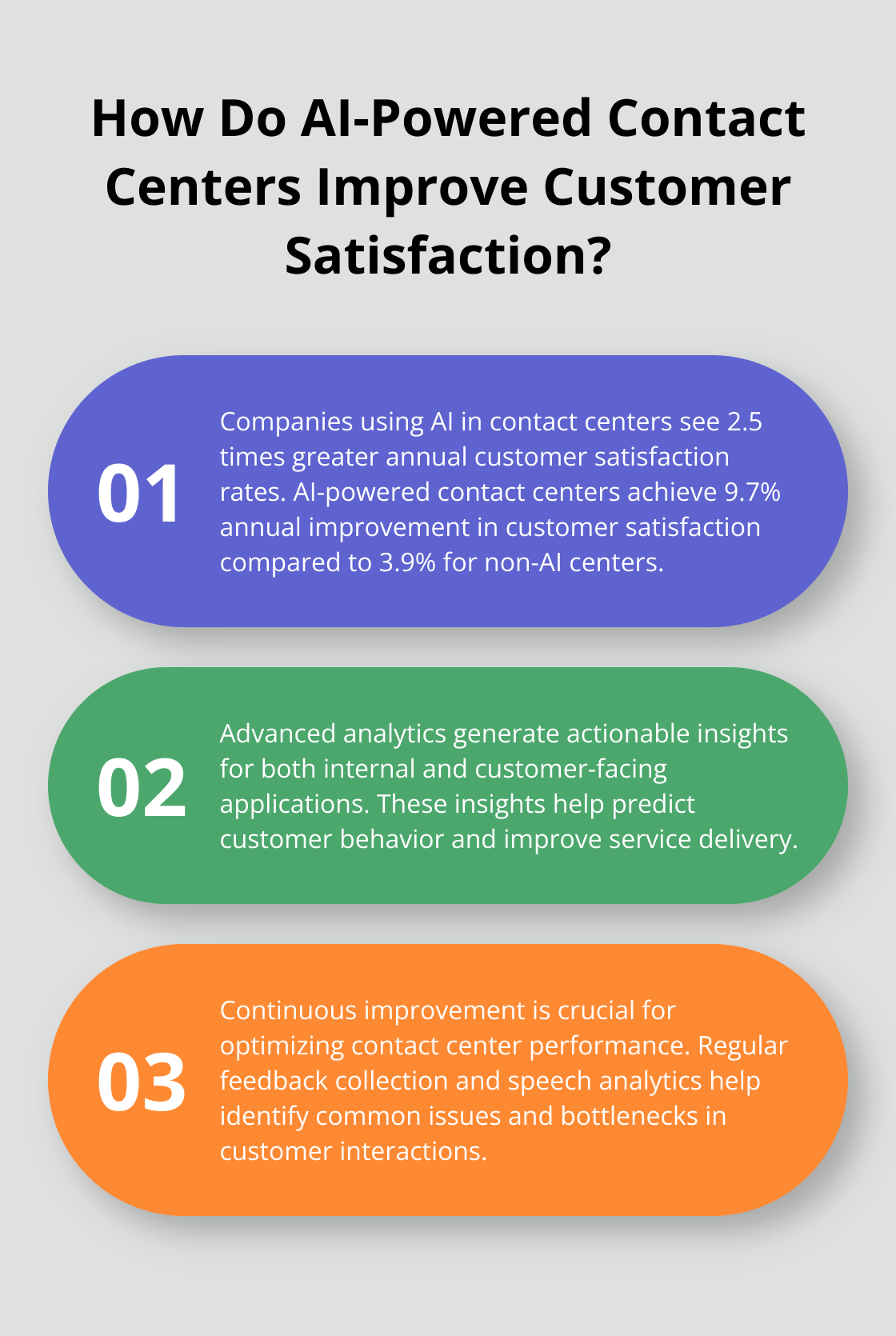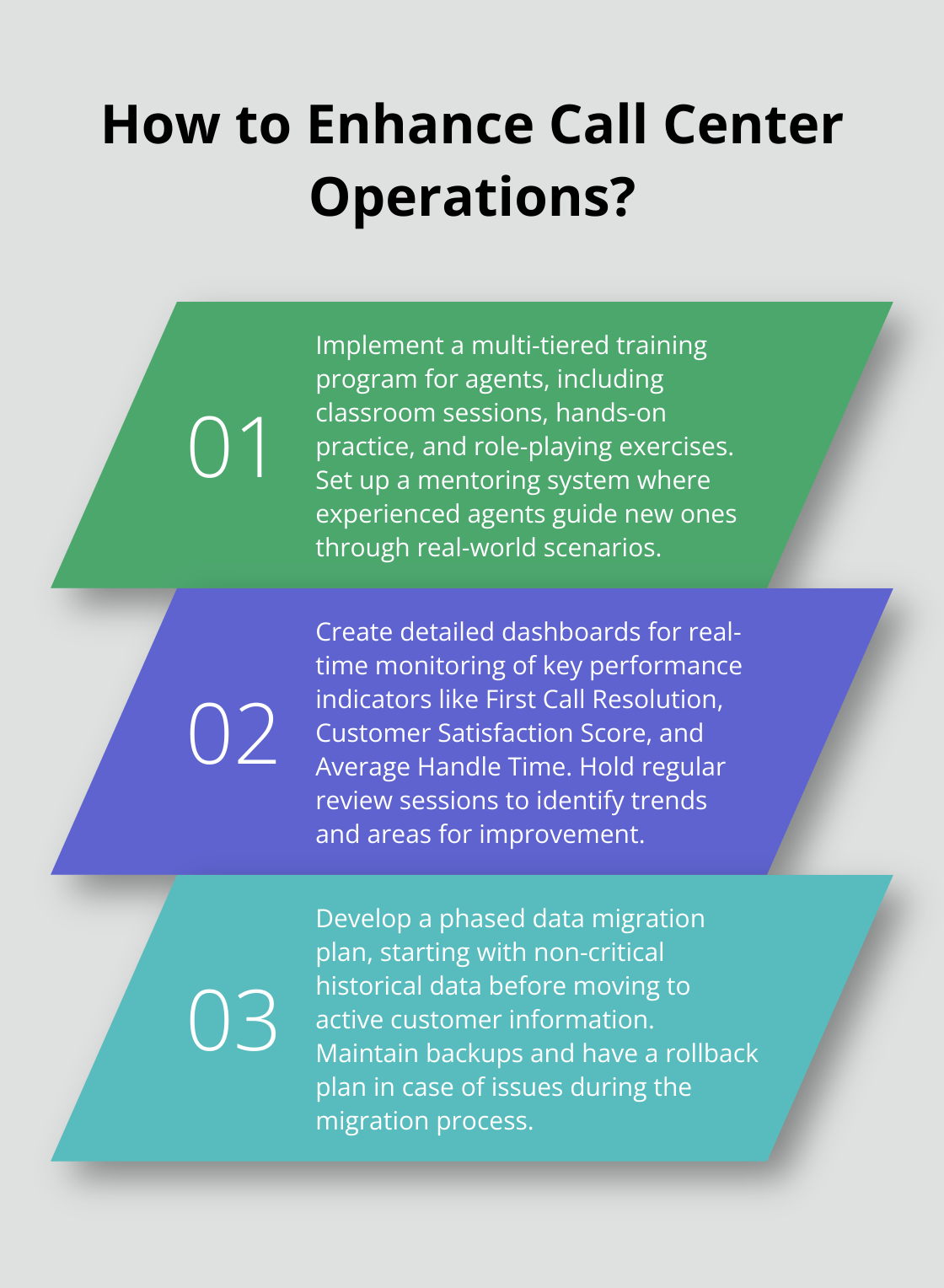Why Selecting the Right Enterprise Contact Center Matters
Choosing the right enterprise contact center is a critical decision for businesses seeking to enhance customer experience and operational efficiency. The contact center landscape has rapidly evolved, offering a broad range of advanced features designed to improve service quality, streamline operations, and drive customer satisfaction.
At Outsource Consultants, we understand the complexities of selecting a contact center solution tailored to your unique business needs. This guide explores the key factors to consider, from essential features to evaluation and implementation strategies, ensuring you make an informed decision.
What Are Must-Have Features in an Enterprise Contact Center?
Enterprise contact centers serve as the backbone of customer service for large organizations. The right features can significantly enhance customer interactions and operational efficiency. Below are the essential capabilities to look for when selecting a contact center solution:
1. Seamless Omnichannel Integration
Customers expect to communicate through their preferred channels—voice, email, chat, and social media. A top-tier contact center must integrate these channels seamlessly, providing a unified customer experience. Companies with omnichannel customer experience management programs achieve a 91% higher year-over-year customer retention rate compared to those without such programs.
2. Data-Driven Insights & Analytics
Advanced reporting and analytics tools provide invaluable insights into customer behavior, agent performance, and operational efficiency. Features such as speech analytics help identify customer sentiment and common issues, enabling businesses to proactively resolve problems before they escalate.
3. Flexible and Scalable Architecture
A scalable contact center solution can adjust operations based on demand. Cloud-based platforms allow businesses to add or remove agents as needed, ensuring efficiency during peak periods while controlling costs during slower times.
4. Seamless System Integration
Your contact center must integrate with existing CRM, ERP, and other business applications to ensure agents have real-time access to relevant customer data. This integration enhances personalization and streamlines customer interactions.

5. AI-Powered Automation & Efficiency
Artificial Intelligence (AI) is transforming contact centers by automating routine inquiries, allowing human agents to focus on more complex issues. Gartner predicts that 85% of customer service leaders will explore or pilot AI-driven customer-facing solutions by 2025.
The implementation of these features can significantly enhance your contact center’s performance. However, selecting the right solution that incorporates all these elements can present challenges. Partnering with experts can help you navigate the complex landscape of enterprise contact center solutions and find the perfect fit for your business needs. As we move forward, it’s important to consider how to evaluate potential enterprise contact center providers effectively.
How to Evaluate Enterprise Contact Center Providers
Selecting an enterprise contact center provider requires a comprehensive evaluation process. This chapter outlines key factors to consider when assessing potential vendors.
Assess Reputation and Track Record
Start your evaluation by examining the vendor’s industry reputation. Look for providers with a proven success record, especially with businesses similar to yours in size and sector. Industry reports from analysts like Gartner or Forrester offer valuable insights into a vendor’s market position and capabilities.

Customer reviews and case studies provide real-world perspectives on a provider’s strengths and weaknesses. Pay attention to reviews that mention long-term relationships, as these indicate consistent quality and reliability.
Analyze Pricing Structures and Total Cost of Ownership
Understanding the pricing model is essential. Most enterprise contact center solutions offer tiered pricing based on features and user numbers. However, the lowest upfront cost doesn’t always translate to the most economical option in the long run.
Consider the total cost of ownership (TCO) over a 5 to 10 year period. This should include purchase price, implementation costs, and operating costs. Some providers might offer attractive initial rates but have hidden costs that accumulate over time.
Request detailed breakdowns of all potential costs. This transparency will help you avoid unexpected expenses and make a more informed decision.
Verify Security and Compliance Standards
In today’s digital landscape, robust security measures are non-negotiable. Your chosen call center provider should adhere to industry-standard security protocols and comply with relevant regulations (e.g., HIPAA, GDPR, or PCI-DSS), depending on your industry.
Inquire about data encryption methods, both in transit and at rest. Ask about their disaster recovery and business continuity plans. Regular security audits and certifications like ISO 27001 indicate a provider’s commitment to security.
Don’t hesitate to ask for detailed documentation on their security practices. A reputable provider will be transparent about their security measures and willing to provide this information.
Evaluate Support and Training Capabilities
The level of support and training a provider offers can significantly impact your implementation success and ongoing operations. Look for providers that offer 24/7 technical support, preferably with multiple contact methods (phone, email, and chat).
Comprehensive training programs are essential for smooth adoption. These should cover not just the basics of using the system but also advanced features and best practices. Some providers offer online learning portals, which can be valuable for ongoing training and onboarding new staff.
Ask about the availability of dedicated account managers or customer success teams. These resources can address complex issues and ensure you’re getting the most out of your investment.
Consider Industry-Specific Expertise
While general-purpose solutions can be effective, providers with industry-specific expertise often offer more tailored solutions. They understand the unique challenges and regulatory requirements of your sector, which can lead to more effective implementations.
For example, if you’re in healthcare, look for providers with experience in HIPAA compliance and handling sensitive patient data. Financial services companies might prioritize providers with robust fraud detection capabilities and experience with financial regulations.
Ask potential providers about their experience in your industry. Request case studies or references from similar businesses. This industry-specific knowledge can be a significant advantage in addressing your unique needs.
The evaluation process can be complex, but it’s a critical step in finding the right enterprise contact center solution. Once you’ve selected a provider, the next phase involves implementing the chosen solution effectively. Let’s explore the key steps in this implementation process.
How to Implement Your Enterprise Contact Center
Set Clear Objectives and Requirements
Start by defining specific, measurable goals for your contact center. These might include reducing average handle time by 20%, increasing customer satisfaction scores by 15%, or cutting operational costs by 25%. Your objectives should align with broader business strategies and address current pain points.

Next, outline detailed requirements. This includes the number of agents, required channels (voice, email, chat, social media), necessary integrations with existing systems, and any industry-specific compliance needs. Be as specific as possible – for instance, if you need to support multiple languages, list them out along with the expected call volumes for each.
Plan Your Integration and Data Migration Strategy
Integration with existing systems often presents the most significant challenge in implementation. Create a comprehensive inventory of all systems that need to interact with the contact center (including CRM, ERP, and any custom applications). Work closely with your IT team and the solution provider to map out data flows and API connections.
For data migration, start by cleaning your existing data. Remove duplicates, standardize formats, and ensure data accuracy. Develop a phased migration plan, starting with non-critical historical data before moving to active customer information. Always maintain backups and have a rollback plan in case of issues.
Develop a Robust Training Program
Agent training plays a vital role in the success of your new contact center. Develop a multi-tiered training program that covers system functionality, customer service skills, and company-specific knowledge. Consider creating a ‘train the trainer’ program to build internal expertise.
Use a mix of training methods – classroom sessions for core concepts, hands-on practice with the new system, and role-playing exercises for customer interactions. Implement a mentoring system where experienced agents guide new ones through real-world scenarios.
Establish and Monitor Key Performance Indicators
Identify KPIs that align with your business objectives. Contact center quality monitoring is essential. Common metrics include First Call Resolution (FCR), Customer Satisfaction Score (CSAT), Average Handle Time (AHT), and Net Promoter Score (NPS). Advanced analytics can help generate actionable insights about what will happen next, through both internal and customer-facing applications.
Set up dashboards for real-time monitoring of these KPIs. Ensure that managers and agents have access to relevant metrics. Regular review sessions (daily or weekly) can help identify trends and areas for improvement.
Embrace Continuous Improvement
After implementation, focus on ongoing optimization. Regularly solicit feedback from agents and customers. Use speech analytics to identify common issues or bottlenecks in customer interactions. Firms using AI enjoy 2.5 times greater annual customer satisfaction rates (9.7% vs. 3.9%).
Try to implement an A/B testing program for new features or processes. This data-driven approach can help you make informed decisions about future improvements.
Implementing an enterprise contact center requires careful planning and execution. These steps will help ensure that your contact center remains a powerful asset for your business, driving customer satisfaction and operational efficiency.
How to Enhance Call Center Operations
Selecting the right enterprise contact center requires careful consideration of various factors, including omnichannel capabilities, analytics, scalability, and AI-powered tools. Businesses must evaluate providers based on reputation, pricing, security, support, and industry expertise. Successful implementation involves clear objectives, robust training, and continuous performance monitoring.

The future of enterprise contact centers will likely feature increased AI adoption, enhanced personalization, and more sophisticated omnichannel integration. Voice recognition and natural language processing advancements will enable more natural customer interactions. These technologies will help businesses deliver exceptional experiences and maintain a competitive edge.
Navigating this complex landscape can challenge many organizations. Outsource Consultants can provide valuable expertise in optimizing call center services and AI technology. Their experience can help businesses find the perfect fit for their unique needs, ensuring seamless integration and cost-efficient solutions.
Frequently Asked Questions (FAQs) on Enterprise Contact Centers
1. What is the difference between a cloud-based and an on-premise contact center?
Cloud-based contact centers offer scalability and remote accessibility, while on-premise solutions provide greater control over infrastructure but require significant upfront investment.
2. How can AI improve contact center efficiency?
AI-powered tools like chatbots and predictive analytics reduce agent workload, enhance response times, and improve customer satisfaction by automating routine tasks.
3. What should I look for in a contact center provider?
Key considerations include omnichannel capabilities, security compliance, industry expertise, pricing transparency, and customer support quality.
4. How long does it take to implement a new contact center solution?
Implementation time varies but typically ranges from a few weeks to several months, depending on system complexity, integrations, and training requirements.
5. What KPIs should I track to measure contact center performance?
Essential KPIs include First Call Resolution (FCR), Average Handle Time (AHT), Customer Satisfaction Score (CSAT), and Net Promoter Score (NPS).






